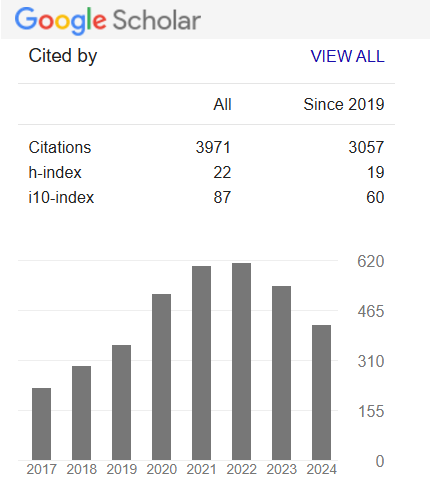Avifaunal Diversity and Conservation Assessment of Shivapur Wetland, Umrer, Nagpur (M.S.), India
Keywords:
Shivapur, Biodiversity, Avifauna, conservation, climate changeAbstract
The recent biodiversity assessment at Shivapur Lake and its surrounding area has identified 33 avifauna species from 14 families, each utilizing distinct ecological zones for survival and reproduction amidst global climate shifts. Birds predominantly exploit shoreline vegetation for nesting, employing "green curtain" and "brown curtain" camouflage to evade predation. The wetland, as a dynamic ecosystem, supports unispecies and multispecies congregations of migratory, resident, and vagrant wading birds. Conservation strategies proposed by local communities, NGOs, and the Zoological Survey of India (ZSI) aim to preserve beta-diversity across ecosystems. Urbanization and metropolitan expansion have fragmented habitats and introduced persistent noise pollution, negatively affecting bird assemblages and disrupting chronobiologically regulated breeding cycles. Additionally, agrochemical contaminants and parasite-laden food sources impact avian health, causing observable physiological changes that serve as bioindicators of wetland pollution. Regular bioremediation, guided by systematic water quality assessments, is essential to mitigate toxin accumulation and biomagnification. Shivapur Lake, located 4 km from the Nagpur-Umrer Highway, is a vital junction for wintering and resident wetland birds, enabling movement across a network of directionally distributed water bodies. Its ecological importance necessitates its designation as a protected avian heritage site to safeguard species survival, enhance conservation efforts, and preserve habitat integrity for both unispecies and multispecies assemblages.
Downloads
References
Alexis BB, Sande E, Mwanjololo M, Kahindo C, Sibomana C and Ntakimaz G (2023) Abundance, density and distribution of 3 wetland bird species: Cattle Egret, Black Crake and African Jacana of Ruxizi delta, in Burundi and the Democratic Republic of Congo. BioLife, 11(4), 5-18. ISSN (online): 2320-4257. www.biolifejournals.com
Bhandarkar SV, Paliwal G and Bande S (2023) Wading birds in lacustrine wetlands of Shrungarbandh Lake, district Gondia, Maharashtra. International Journal of Scientific Research in Biological Sciences, 10(2), 12-18.
Chaudhari RM and Ishi SS (2019) Diversity of bird species in Shahada Tahasil, Maharashtra State, India. Journal of Innovative Technology Research, 6(1), 539-547.
Chilke AM (2012) Avian diversity in and around Bamanwada Lake of Rajura, district Chandrapur (Maharashtra). Scholars Research Library, 3(4), 2014-2018.
Craig ES, Elbin SB, Sparks JP and Curtis PD (2015) Identifying important foraging habitat for colonial waterbirds in an urban estuary: A stable isotope approach. Waterbirds, 38(3), 330-338.
Gajardo et al. (2009) Water bird assemblages and habitat characteristics in wetlands: Influence of temporal variability on species-habitat relationships. Waterbirds, 32(2), 225-233.
Gilpin ME and Diamond J (1976) Calculations of immigration and extinction curves from the species-area distance relation. Proceedings of the National Academy of Sciences, 73(11), 4130-4134.
Gurjar RS (2013) Biogeography and climate change. Satyam Publishers, Jaipur, India.
IUCN (2022) The IUCN Red List of Threatened Species. Version 2021-03. https://www.iucnredlist.org
Lenka K, Tripathi B and Sharma LK (2023) Understanding the bird species assemblages found in and around Thane Creek, Maharashtra, India. Ornithology Research. http://fou.org.10.1007/S43388-023-00153
Lin MM, Fuller RA, Gibson L and Chen Y (2024) Conservation-oriented management benefits the Black-Faced Spoonbill, an endangered migratory waterbird. Global Ecology and Conservation, 54, 1-13, e03077.
Narwade SS, Fartade KM and Fartade MM (2010) Effect of agricultural activities on breeding success of Red-Wattled Lapwing Vanellus indicus. National Journal of Life Science, 7(1), 32-34.
Pande S, Deshpande P and Niranjan S (2013) Birds of Maharashtra. 2nd edn. Ela Foundation, Pune.
Patil RG and Chavhan RN (2022) Study on bird species diversity in and around Pardi Lakes, Gadchiroli MS, India. International Research Journal of Science and Engineering, 10(6), 151-156.
Porte SD and Gupta S (2017) Assessment of distribution patterns of wetland birds between unpolluted and polluted ponds at Ratanpur, district Bilaspur, Chhattisgarh, India. Indian Journal of Science Research, 12(2), 204-215.
Grimmett R, Inskipp C and Inskipp T (2011) Birds of the Indian Subcontinent. 2nd edn. Oxford University Press, Oxford.
Saxena DR, Kharwade LV and Bhattacharya JM (2021) Biodiversity of birds in Nari and Pili Nadi area, Nagpur. Mukt Shabd Journal, 10(2), 1077-1082.
Saxena DR, Tupkar NJ, Lonkar RA and Karim FA (2022) Avian biodiversity at Satpuda Botanical Garden, Nagpur (M.S.): Millennium urbanization and associated conservation management practices. Journal of Punjab Academy of Sciences, 18-27.
Saxena DR, Lonkar RA, Tupkar NJ, Karim FA and Kharwade LV (2023) Distribution of aquatic avifauna in regions of Vidarbha (M.S.), India. Journal of Xi'an University of Architecture and Technology, 15(9), 357-377.
Sheikh AN, Meshram AP, Tupkar NJ and Saxena DR (2021) Current biodiversity of Telengkhedi wetland lake ecosystem, Nagpur (M.S.). International Journal of Advanced Research in Science, Engineering and Technology, 9, 1123-1128.
Shukla A and Singh SP (2016) Avian fauna of Unchehara, Satna district of Madhya Pradesh. National Journal of Life Science, 13(2), 201-206.
Veeramani A et al. (2018) Diversity and habitat selection of wetland birds in Nilgiris, South India. International Journal of Zoology and Animal Biology, 1(3), 00014.
Virani SR (2021) Avian diversity assessment of tropical forest in Central India. Bioscience Biotechnology Research Communications, 14(3), 1-18.
Wang X, Kuang F, Tan K and Zhijun M (2018) Population trends, threats, and conservation recommendations for waterbirds in China. Avian Research. https://doi.org/10.1186/s4065-018-0106-9
Zainab KM, Wagh G and Chaudhari P (2024) Diversity and abundance of wetland avifauna at Malkhed Lake of Amravati region, Maharashtra, India. International Journal of Fauna and Biological Studies, 11(4), 50-58.
Zimmerman BL and Bierregaard RO (1986) Relevance of the equilibrium theory of island biogeography and species-area relationships to conservation with a case from Amazonia. Journal of Biogeography, 13(2), 133-143.
Downloads
Published
How to Cite
Issue
Section
License
Copyright (c) 2025 Authors

This work is licensed under a Creative Commons Attribution-NonCommercial-NoDerivatives 4.0 International License.
Open Access This article is licensed under a Creative Commons Attribution 4.0 International License, which permits use, sharing, adaptation, distribution and reproduction in any medium or format, as long as you give appropriate credit to the original author(s) and the source, provide a link to the Creative Commons license, and indicate if changes were made. The images or other third party material in this article are included in the article’s Creative Commons license unless indicated otherwise in a credit line to the material. If the material is not included in the article’s Creative Commons license and your intended use is not permitted by statutory regulation or exceeds the permitted use, you will need to obtain permission directly from the copyright holder. To view a copy of this license, visit http://creativecommons.org/ licenses/by/4.0/










